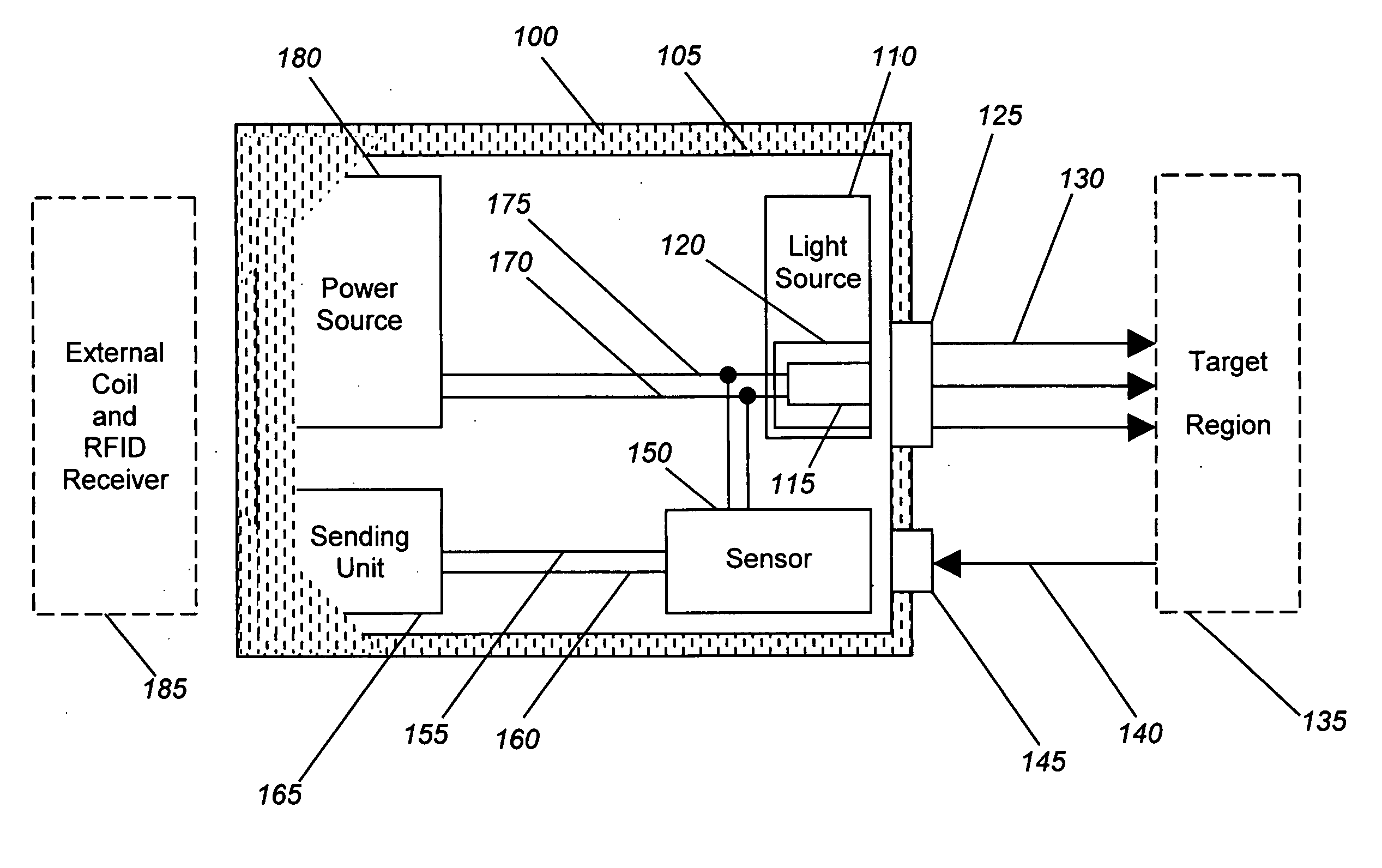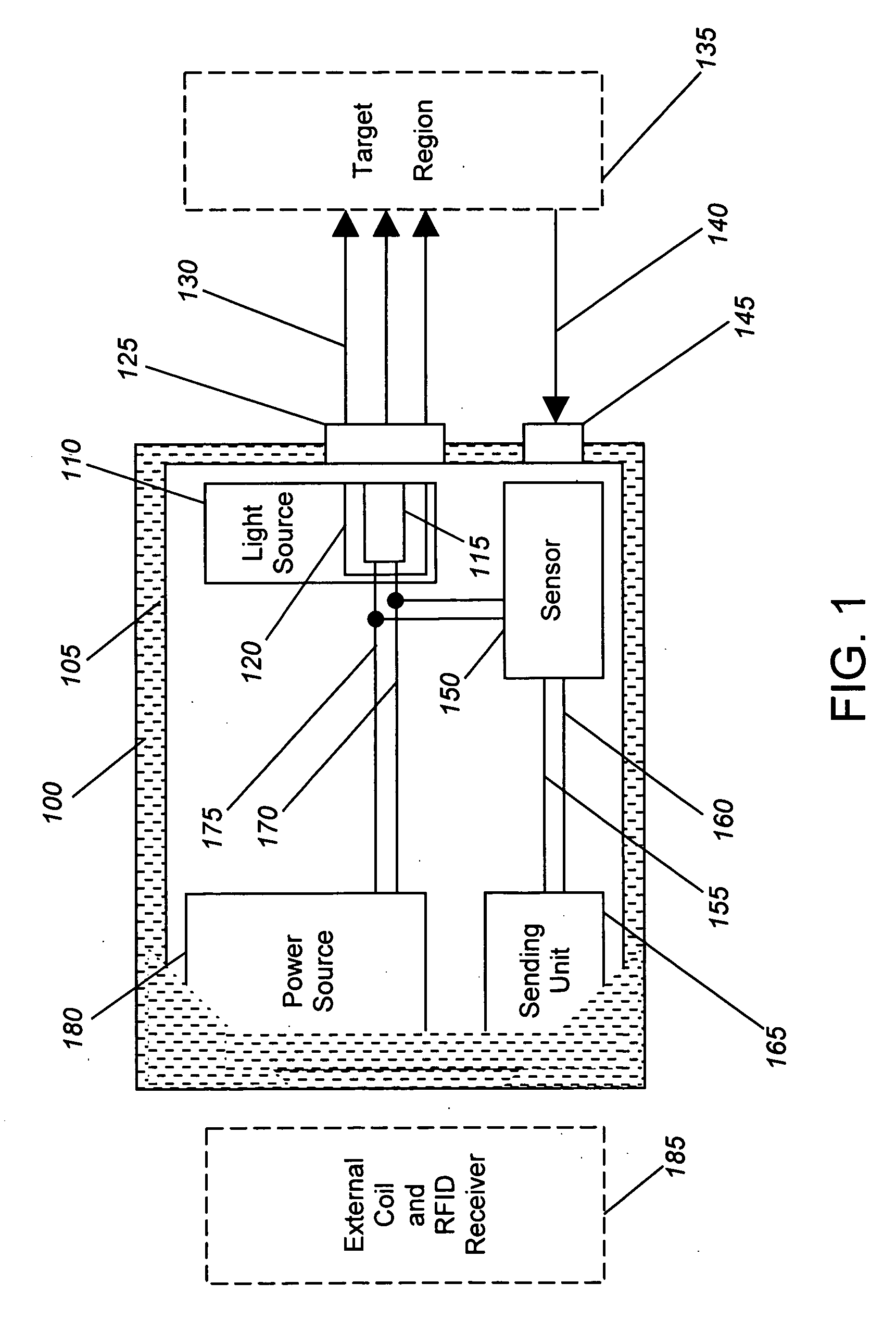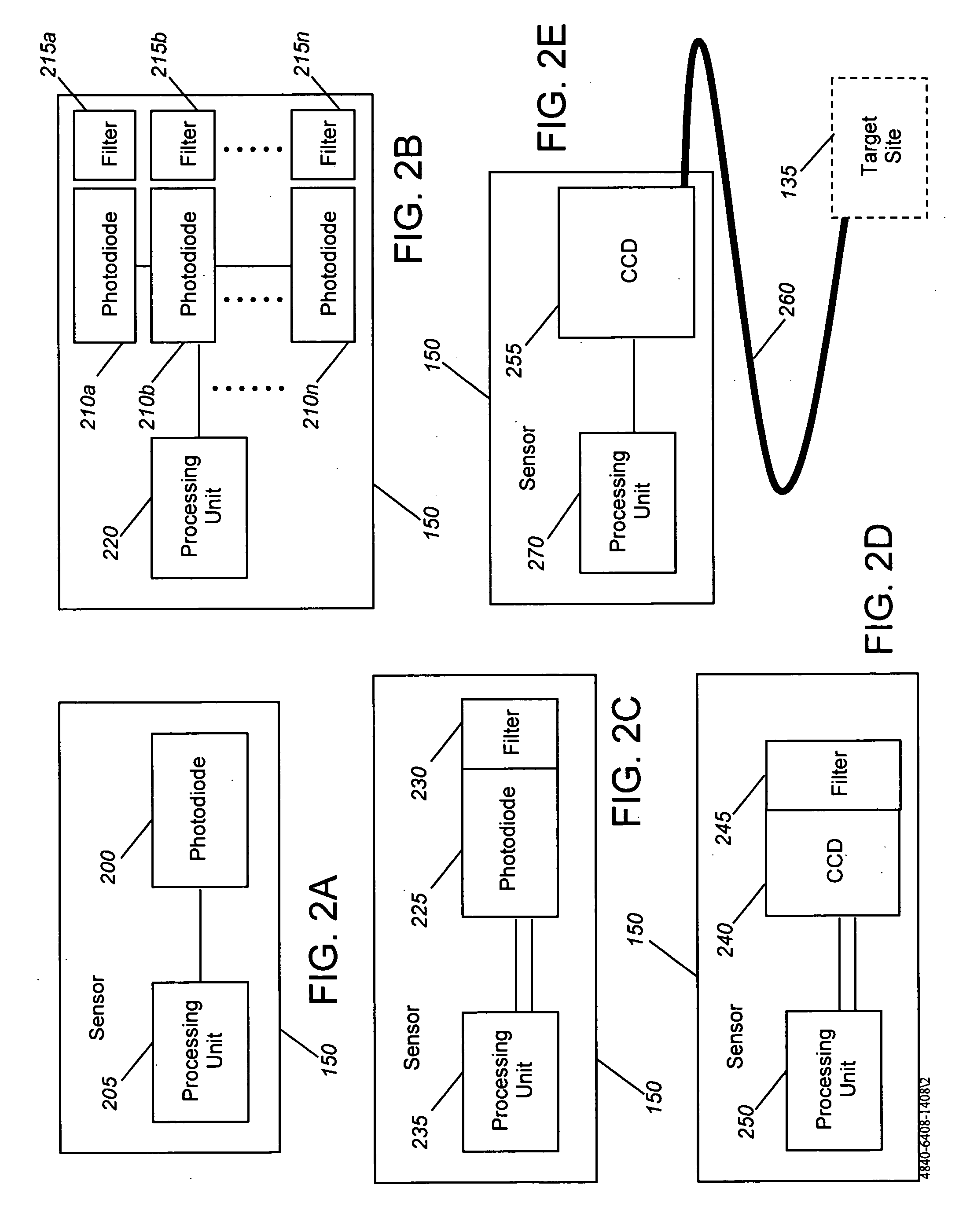Device and methods for the detection of locally-weighted tissue ischemia
a tissue ischemia and highly localized measurement technology, applied in the field of highly localized measurement of tissue ischemia, can solve the problems of unreliable clinical detection of ischemia, insufficient oxygen delivery to meet the metabolic needs of tissue, and ischemia is especially difficult to detect, and blood tests are also insensitive to local ischemia
- Summary
- Abstract
- Description
- Claims
- Application Information
AI Technical Summary
Benefits of technology
Problems solved by technology
Method used
Image
Examples
Embodiment Construction
[0026] Generally, the present invention provides devices and methods for detecting local ischemia in a target tissue without regard to tissue site and for producing a target signal generating a direct, quantitative measure or index of ischemia. Tissue, as used herein, may be any material from a living animal, plant, viral, or bacterial subject, with an emphasis on mammals, especially humans. A target tissue may be a tissue material to be detected, imaged, or studied. A target signal may be a detected signal specific to the desired target tissue. This signal may be enhanced through use of known optical techniques, including use of a contrast agent, scattering, absorbance, phosphorescence, fluorescence, Raman effects, or other known spectroscopy and signal processing techniques, provided only that such techniques are applied in a manner to perform substantially locally and capillary weighted ischemia sensing.
[0027] Ischemia, as used herein, may be a condition in which the perfusion o...
PUM
 Login to View More
Login to View More Abstract
Description
Claims
Application Information
 Login to View More
Login to View More - R&D
- Intellectual Property
- Life Sciences
- Materials
- Tech Scout
- Unparalleled Data Quality
- Higher Quality Content
- 60% Fewer Hallucinations
Browse by: Latest US Patents, China's latest patents, Technical Efficacy Thesaurus, Application Domain, Technology Topic, Popular Technical Reports.
© 2025 PatSnap. All rights reserved.Legal|Privacy policy|Modern Slavery Act Transparency Statement|Sitemap|About US| Contact US: help@patsnap.com



